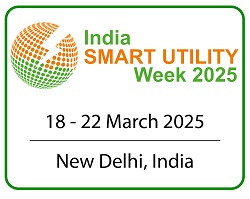Mark Patrick, Mouser Electronics
While much of the focus on electric vehicles (EVs) is on the development of the vehicles themselves, there is a significant requirement to build a global charging infrastructure. Governments are attempting to meet environmental targets and see the transition to EVs as being critical, so are promoting the change. However, infrastructure seems to be lagging behind in many countries.
‘Range anxiety’ is a common issue with EVs, relating to the concern that the vehicle will run out of battery power before reaching a suitable charging station. A secondary concern is that charging will be slow, making long journeys highly inconvenient. A petrol car can be fuelled in minutes while waiting hours for an EV to charge could make many journeys non-viable.
Faced with a huge change in their markets, major oil companies have been looking how they can adapt their business models for some time. Forecasting how their business will change, BP estimates that the 135,000 or so EVs in the UK will have grown rapidly to 12 million by 2040. To get a rapid entry to this market they acquired Chargemaster – the UK’s largest charging company with their Polar network consisting of more than 6,500 charging stations. Their advanced rapid chargers deliver 150kW, thereby adding 150km of range in around ten minutes.
Chargemaster is a full-service charging company. Alongside managing the charging network they also design, manufacture and service the charging units. The acquisition is expected to rapidly grow BP’s charging infrastructure across their 1200 UK forecourts, rapidly expanding the 70 charging stations currently available. Recognising the need for mobile charging as well as fixed infrastructure, BP has also invested $5M in the mobile charging technology offered by FreeWire Technologies.
BP is just one of the oil companies moving into the charging arena. New Motion was recently acquired by Shell, giving direct control of 30,000 European charging points as well as their access to the pan-European IONITY network. Continuing the European theme, a 350kW fast charging station that is powered by renewable sources (wind and solar) was deployed in Germany by Dutch company Fastned. This is the first operational site in a planned network that will expand to 1000 locations. The first site is on the major A3 autobahn between Dortmund and Munich comprises several chargers, which extend range by 100km in just 20 minutes. “In the next few years, German car manufacturers such as Porsche, Audi, Volkswagen, BMW and Mercedes will introduce fully electric models that can charge at high power. This is a great challenge and opportunity for the automotive industry and charging companies,” said Bart Lubbers, co-founder of Fastned.
While this represents a significant step forward for the number of charging points, it is really just scratching the surface of what will eventually be required. The UK will need an extra 83,500 charging points to meet the growth in EVs according to Emu Analytics. With just 16,500 charging points deployed already, a six-fold increase must be delivered before 2020, when estimates show 1 million EVs travelling the UK’s roads.
The UK government is both investing and legislating to drive this growth. £440M has been earmarked for charging infrastructure development and it is now a requirement that every new-build house has an EV charging point. However with the older housing stock in the UK, 43% of homes have no off-street parking making charging at home a challenge. One solution is the lamppost-based charging infrastructure being developed by Ubitricity that will provide a workable solution in built-up areas.
Another innovative solution is the pavement chargers from Urban Electric Networks, a company that has origins in Imperial College, London. Their UEone chargers rise out of the pavement and provide up to 5.8kW, retracting under the pavement when not required. Even though the chargers are standard height, they only require 405mm below the pavement making installation cheaper and, more importantly, actually possible on over 90% of residential pavements.
As with many innovations these days, the pavement chargers are controlled by an app that makes them rise, charge and retract. The SmartCable technology used for Ubertricity lampposts also supports the UEone pavement chargers, making connectivity very simple. “The most convenient, affordable and climate-friendly way to charge an EV from the grid is at home at night, yet up to 85% of households in some urban residential areas cannot do so because they park on-street, acting as a barrier to EV adoption,” stated Olivier Freeling-Wilkinson, co-founder of Urban Electric.“By installing an over-supply of pop-up charge points in a street from day one we will give certainty of access to a home-based charge point in residential parking zones, so that local authorities can enable the 11.6 million UK households currently excluded from driving zero emission to make the switch.”The first 100 chargers have just been installed in Oxford to prove the technology.
One more hurdle to be overcome is the issue of standardisation, especially with connectors. The most accepted combined charging system (CCS) is the de-facto standard, but this has different connectors for the US and Europe (Type 1 or Type 2) as well as specialised ‘Combo 1’ and ‘Combo 2’ connectors for rapid charging. In Asia, Japan is focussing around the CHAdeMO standard while China is going their own route with GB/T. While vehicles rarely travel between these countries, the opportunities for economies of scale for charger manufacturers until standards converge.

Taking technology further, automated vehicle charging is on the cards. The technical University of Graz in Austria has been collaborating with automotive systems company MAGNA Steyr Engineering and BMW. Together they have been experimenting with a combination of robots, cameras and machine learning to develop a design based upon self aligning connectors.
“For the first time we have found a way to automatically recharge several vehicles, one after another, using a robotic charging station, without the need to adapt the vehicles,” explainedproject leader,Bernhard Walzel. “The robot recognises the charging socket by means of sophisticated camera technology and can charge several e-cars in sequence after they drive into the charging station. This means the system still works even when a vehicle is not parked in an exact position.”
While progress is being made, it remains ‘early days’ and development is expected to be rapid. In the USA, Delta are developing a 400kW extreme fast charger (XFC) that will add enough charge to EVs for an additional 250kms in just ten minutes. Backed by the US Department of Energy to the tune of $7M and supported by General Motors, the ambitious project intends to reduce charger size by a factor of four – with prototypes due next year.












